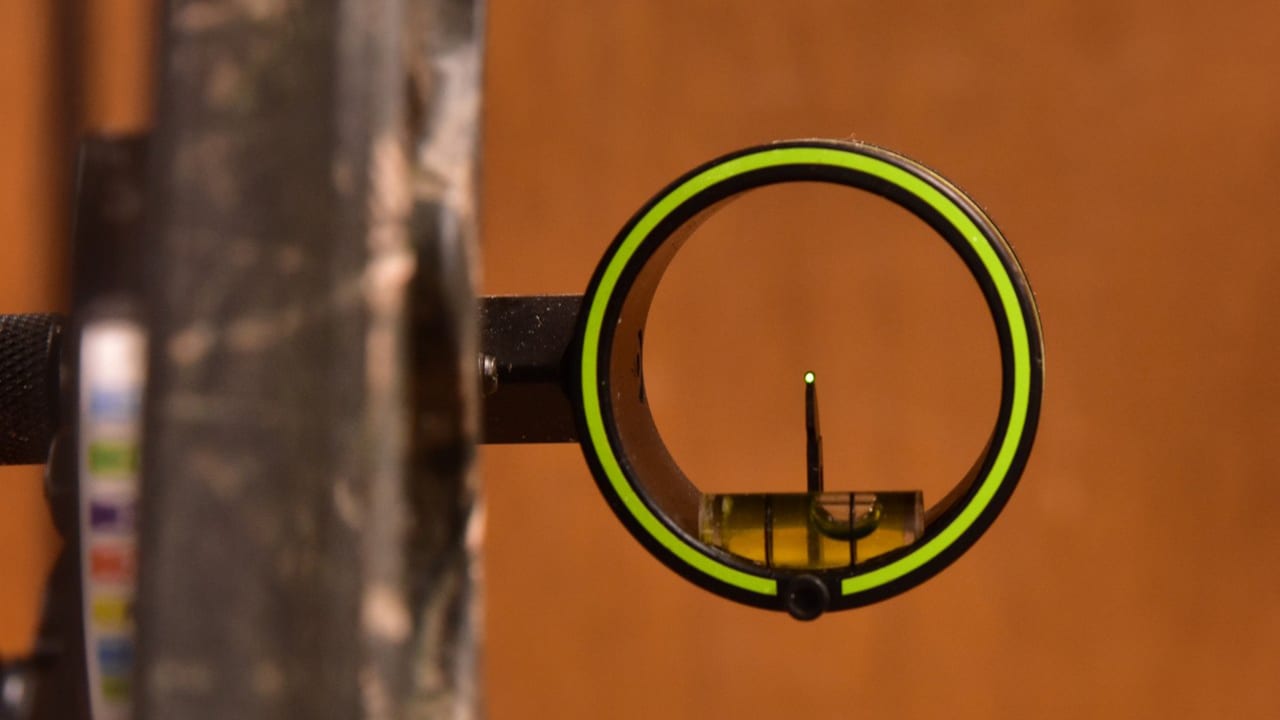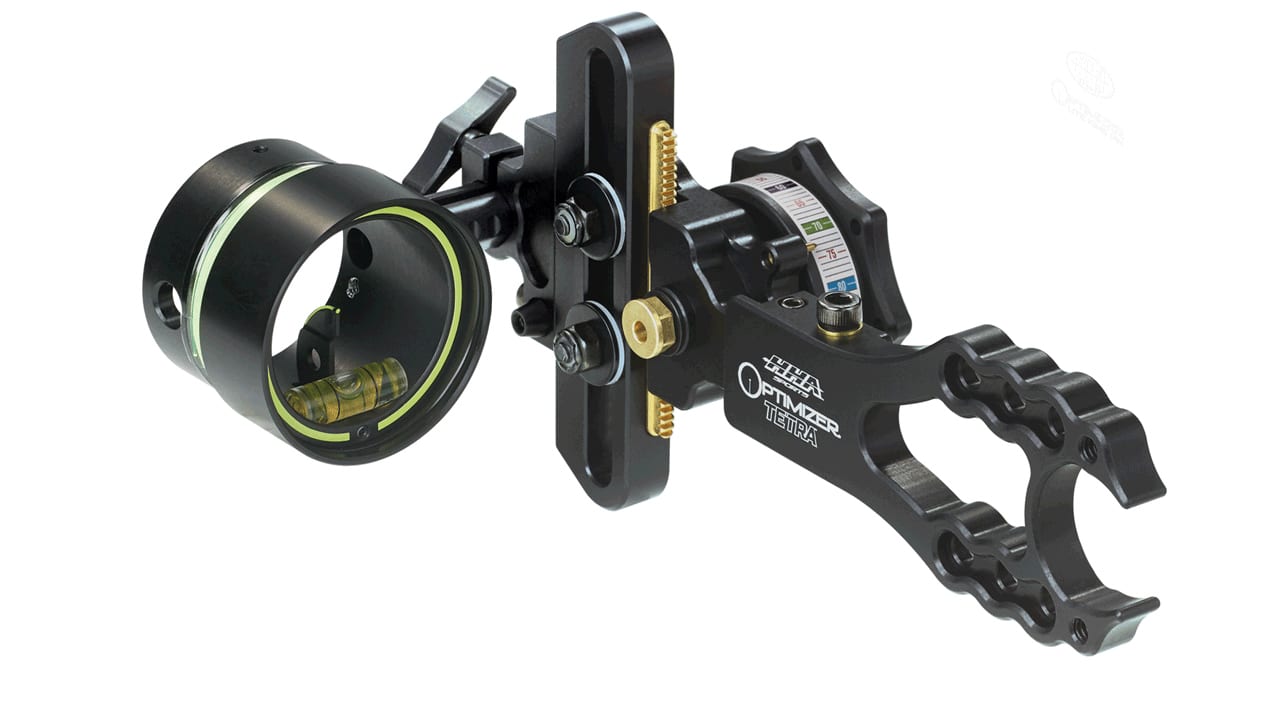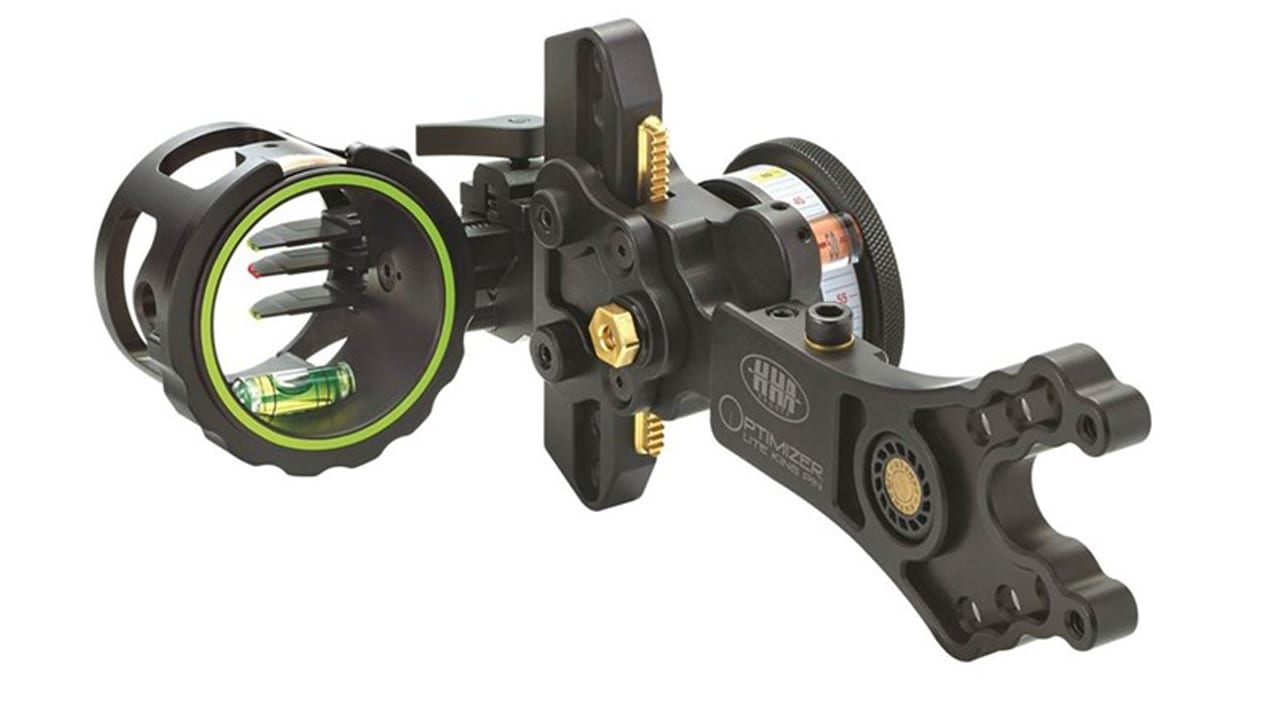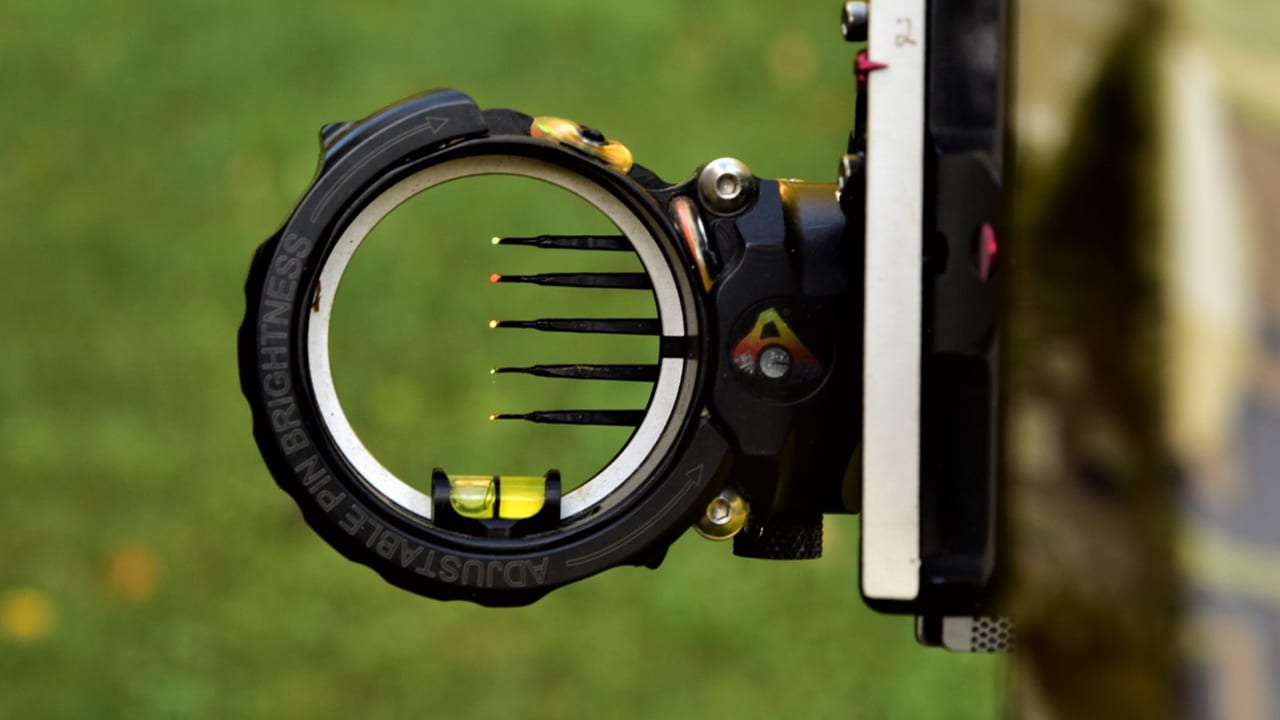What’s the best bow sight – single pin or multi-pin?
That’s like asking, “Which is better – Ford or Chevy?”
The honest answer is whichever works for the way you hunt. But setting that aside, there are inherent pluses and minuses for both. Let’s discuss them.
Single Pin Bow Sights
The single-pin sight features one aiming point that you move up and down to match the distance to your target. They require a sight tape, which plots yardage marks that guide your sight movements. Those sight tapes have to match your arrow speed in order to provide accurate distance markings.

Single pin or multi-pin, which do you prefer?
Single-pin sights have many positives. First, no matter what distance you’re shooting at, you can always be aiming directly behind your pin. The target can be 20 yards out, 27, 35, 42 or whatever, and you’ll always be able to set your sight for that exact distance. There is no “gap shooting,” which we will discuss when we get to multi-pin sights.
A single pin leaves your scope housing – and therefore. Your sight picture – clutter free. You only have one pin to pay attention to without having to look around other pins stacked on top of one another. Which leads into the benefit of not accidentally aiming with the wrong pin. If there’s only one pin to look at, you can’t pick the wrong one.

HHA single-pin bowsights are some of the most popular bow sights in the world.
The list of negative strokes against single-pin sights has to start with the fact that if you set your pin, come to full draw and then the deer or other animal you’re aiming at suddenly moves to a different distance, now you either have to guess where to aim using the pin that’s already set, or you have to let down your bow and adjust your sight.
Also, if you change something about your setup, like you increase or lower the draw weight or you switch arrows, you’re likely going to have to change sight tapes. If your tapes are just that – stickers – then you have to ruin one to change to another. Some sights have metal sight tapes, which make life a bit easier, but it’s still more involved than just moving your pins. And what do you do if none of the tapes that come with your sight exactly match your shooting?
Multi-Pin Bow Sights
Multi-pin sights features scopes with several pins – usually three, four, five or seven. Each of these are set to a specific distance. For example, the pins in a five-pin sight might be set at 20, 30, 40, 50 and 60 yards.
The biggest benefit of the multi-pin sight is you can come to full draw and change your aiming point simply by moving your arm to bring a new pin onto your aiming point. If a deer moves after you draw, you can adjust you aim without having to let down your bow.

This HHA King Pin 3-pin bow sight features a slider so you can adjust your pins for long distance shooting.
Also, the multiple pins can help you with range estimation. If you don’t have a rangefinder, or you don’t have time to use it, you’re going to have to gauge the distance to your target on your own. After shooting with a multi-pin sight for a while, you begin to learn how big things look in relation to your pins. That is, the torso of a deer that’s 30 yards out might perfectly fit between your 20 and 30-yard pins. So when you see that looking through your sight, you have a distance reference.

Multi-pin sights can house 3, 5, or even 7 pins.
The primary pitfalls hunters see with multi-pin sights are that it’s possible to accidentally aim using the wrong pin, which likely will lead to a missed shot. And the sight picture is cluttered by pins you’re not aiming with, which can make it difficult to focus on a specific aiming point.
Both single-pin and multi-pin sights have their ardent fans in the bowhunting world. Neither one is right or wrong in the broad sense. The trick is to figure out which one is right for you.

 By
By 



